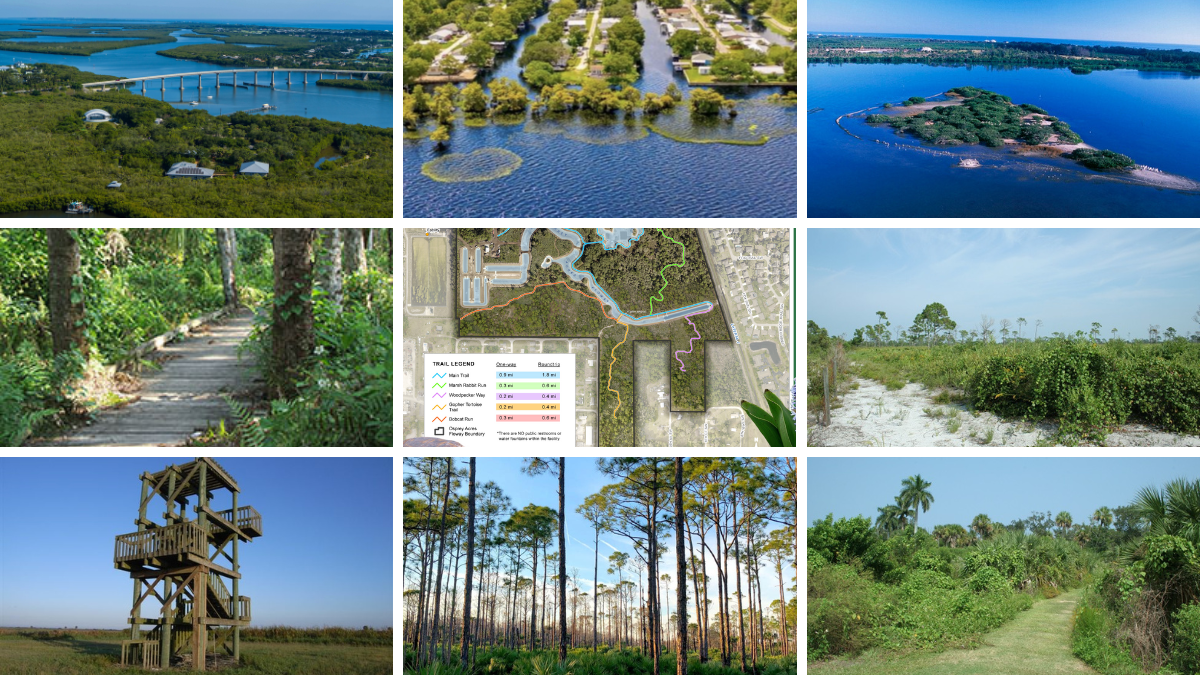
Bird watching is an exciting and rewarding activity that offers enthusiasts an opportunity to experience the beauty and diversity of nature up close. If you’re a bird watcher looking for a new adventure, then Vero Beach in Florida is the perfect destination for you. Known for its stunning landscapes and rich biodiversity, Vero Beach is a bird watcher’s paradise. With an abundance of unique bird species and breathtaking natural scenery, there are plenty of top-notch bird watching spots to explore in Vero Beach. In this article, we’ll take a closer look at the top 9 bird watching spots in Vero Beach, Florida, and explore what makes each location so special.
In no particular order:
--> Join the conversation in Vero Beach Foodie and 46,600 very active members right now! <--
--> Subscribe to our weekly email and discover all the local events and happenings around the town. Join 26,650 of your neighbors right now! <--

Blue Cypress Lake
Blue Cypress Lake is a natural wonder that boasts of magnificent scenery and a diverse ecosystem. Located in Florida, this picturesque lake is approximately seven miles long and three miles wide, with 21 miles of shoreline surrounded by 29,000 acres of marshes, swamps, and cypress forests. Visitors to this natural haven can expect to experience a sense of complete surrender to Mother Nature as they take in the breathtaking sights of blue skies giving way to blue-hued water. The lake is said to derive its unique blue color from the reflection of the Blue Cypress trees on its surface during sunrise. Blue Cypress Lake is not only a beautiful site, but it is also home to over 200 Osprey nests along the shoreline, making it a top Osprey nesting site. Visitors can get up close and personal with these majestic birds while kayaking or canoeing through the lake. The lake is also home to a range of wildlife, including American Alligators, bald eagles, and a variety of fish such as largemouth bass, crappie, bluegill, catfish, chain pickerel, and more. To experience the true beauty of Blue Cypress Lake, visitors can visit Middleton’s Fish Camp, the only one of its kind on the lake, which offers eco-tours and fishing opportunities. A trip to Blue Cypress Lake is like stepping into an outdoor Shangri-La, where visitors can connect with nature and experience the wonders of the natural world.
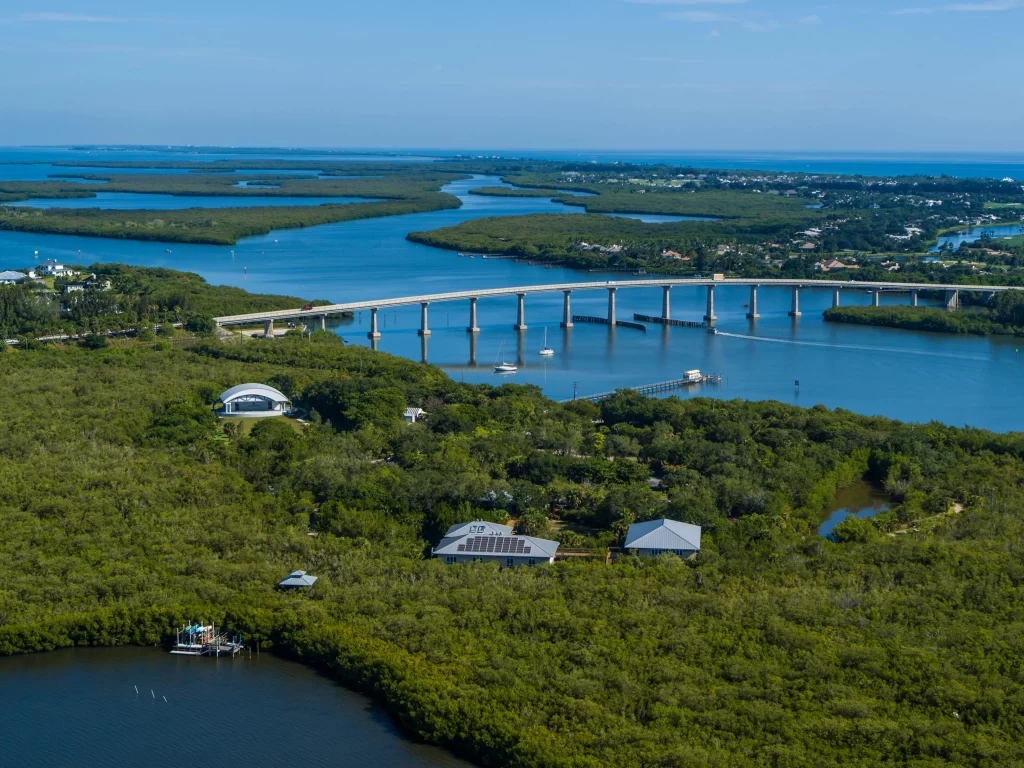
The Environmental Learning Center
See a variety of local and migratory bird species as you stroll campus.
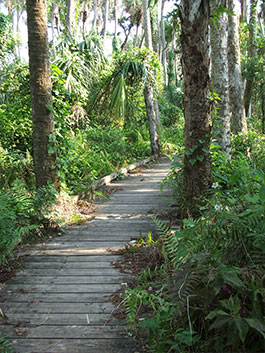
Oslo Riverfront Conservation
Visitors walking along the “Hammock Loop” trail can enjoy the sight of a dense maritime hammock teeming with a variety of wildlife. This includes neo-tropical songbirds, native songbirds, woodpeckers, hawks, and squirrels. If lucky, one may also catch a glimpse of a raccoon, armadillo, or opossum along the way!
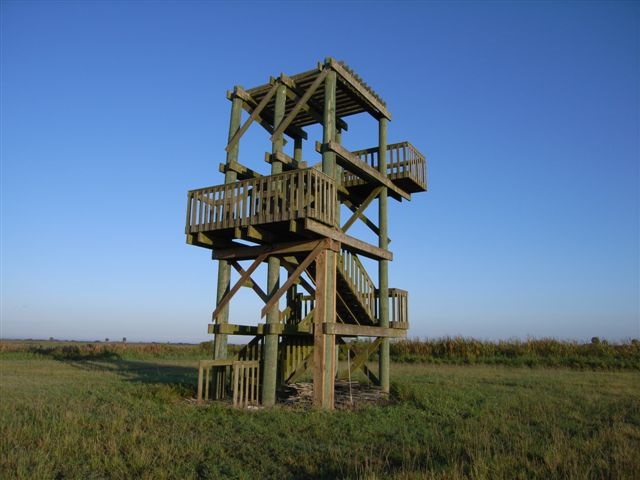
T. M. GOODWIN WATERFOWL MANAGEMENT AREA
The Broadmoor Marsh Unit is a wetland restoration project situated in the upper St. Johns River Basin. It encompasses open marsh habitats, mudflats, and impoundments that attract a diverse range of duck species, such as Mottled Duck, Gadwall, Blue-winged Teal, Fulvous Whistling-Duck, and Black-bellied Whistling-Duck, from late fall to winter. Even rare species like Snow Goose and Cinnamon Teal have been spotted in the area. Apart from these, visitors can also spot Limpkin, Purple Gallinule, Wood Stork, Black-necked Stilt, both night-herons, Roseate Spoonbill, and Northern Harrier, while Northern River Otters are occasionally seen. Visitors can view the birds by following a series of dikes that encircle the impoundments. During migration, one can also catch sight of flocks of Bobolinks. Selected levee roads permit vehicle access on Mondays and Thursdays when conditions are suitable. A three-tier observation tower, approximately two miles north of the office, located on the southern end of the property offers an excellent vantage point for birdwatching (bring a spotting scope). The road leading to the area also provides opportunities to spot various bird species, ranging from Swallow-tailed Kite to Northern Bobwhite to Crested Caracara. However, during certain hunting seasons, the site is closed to other visitors (click here for dates, regulations, and more information). Additionally, visitors can spot the Stick Marsh Critical Wildlife Area, located at the entrance of the WMA, and easily viewed from the boat launch parking area. These two small islands provide a roosting spot for thousands of wading birds every night. From January through July, the islands become home to hundreds of nesting Roseate Spoonbills, egrets, and herons.
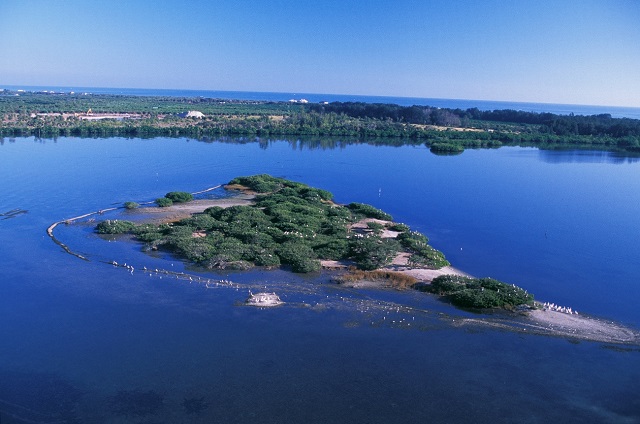
PELICAN ISLAND NATIONAL WILDLIFE REFUGE
Pelican Island, located within the Indian River Lagoon, was declared a bird sanctuary by President Roosevelt in March 1903 and is now the first National Wildlife Refuge in the United States. The refuge is renowned for its Brown Pelican rookery, but it is also home to 15 other species that nest on the 4.2-acre island, including Wood Stork, Anhinga, American Oystercatcher, and various herons and egrets. Additionally, at least 15 other bird species use the island for feeding and resting. Although visitors cannot access the island, they can view it from a boat (from outside the closed area) or from a distance from land. Jungle Trail road leads to the 3/4-mile interpretive, wheelchair-accessible Centennial Trail (inaugurated on the refuge’s 100th anniversary), which ends at an elevated observation tower equipped with two fixed viewing scopes (one of which is wheelchair-accessible). Two additional foot trails around impoundments and mangroves provide further birdwatching opportunities, including a new observation deck on the Joe Michael Memorial Trail overlooking the mudflats. The Pelican Island Orientation Area, located near the junction of A1A and Jungle Trail, also offers restrooms and additional kiosks. During summer, Roseate Spoonbill and Magnificent Frigatebird make an appearance, while American White Pelicans overwinter here. Visitors can also spot over 30 butterfly species, such as Giant Swallowtail, Cassius Blue, Mangrove Buckeye, Mangrove Skipper, and Painted Lady. The large and spectacular Malachite, typically found much further south, has been sighted here in January.
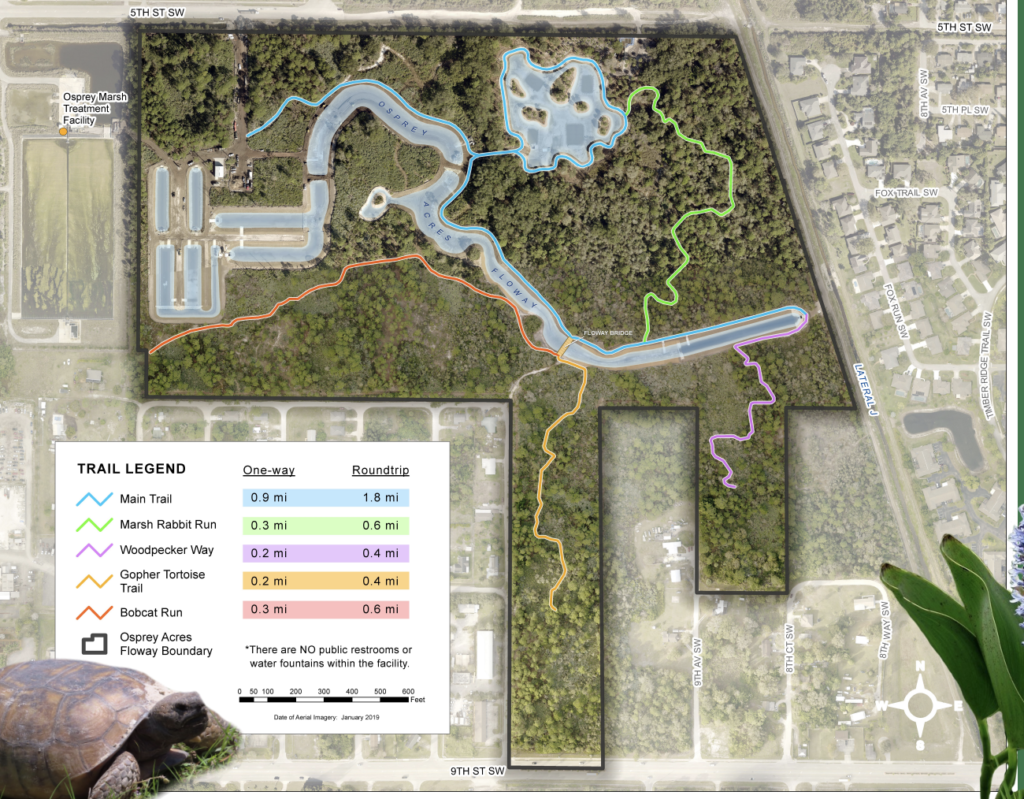
Osprey Acres Stormwater Park & Nature Preserve
This 83.7-acre property showcases a variety of natural Florida ecosystems such as pine-covered hills, oak hammocks, a small scrub area, and newly created wetlands. The presence of these diverse habitats fosters a rich array of biodiversity within the site. Originally planned for more than 400 residential lots, Osprey Acres was acquired by Indian River County to not only safeguard these delicate ecosystems but also to aid in the treatment of stormwater and reverse osmosis reject water before they enter the Indian River Lagoon. The water for treatment is sourced from both Osprey Marsh (adjacent to the property) and untreated canal water. The property features special treatment cells and a constructed serpentine flowway that not only filter surface water, removing nutrients that could have led to harmful algal blooms in the Lagoon, but also provide crucial wetland habitat for birds, mammals, reptiles, amphibians, fish, and insects – up to 45% of which are rare and endangered species. We hope you enjoy your nature experience today and draw inspiration from the wild and beautiful world we inhabit.
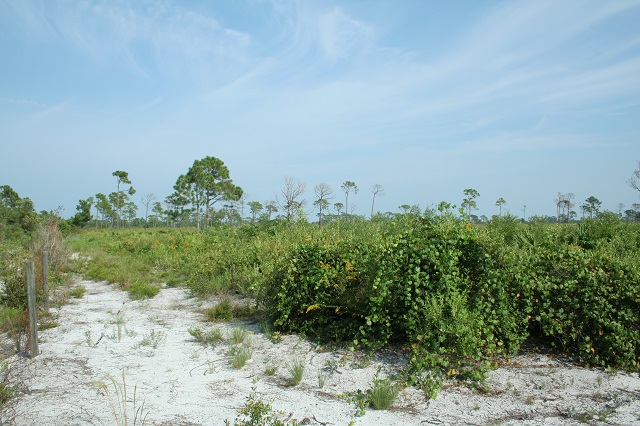
WABASSO SCRUB CONSERVATION AREA
To reach this site, park at West Wabasso Park and locate the entrance kiosk and trailhead in the southeast corner of the park. This lesser-known conservation area offers protection for a variety of species that depend on the scrub ecosystem, such as the Florida Scrub-Jay, Florida Scrub Lizard, Gopher Tortoise, Gopher Frog, and Curtiss’ Milkweed. The well-maintained 1-mile hiking trail takes you through sand pine scrub, oak scrub, a small flatwoods stand, and seasonal freshwater wetlands to the east and south. The area’s eastern and southern sections are home to four families of scrub-jays, while Great Horned Owls are frequently sighted on the south side of the property. In addition, you might encounter Northern Bobwhites, Common Ground-Doves, Loggerhead Shrikes, Brown Thrashers, Eastern Towhees, and Wood Storks (if water is present). Keep an eye out for Swallow-tailed Kites and Bald Eagles soaring above. Due to the scarce shade, remember to bring plenty of water and sun protection, and plan your visit during early morning or late afternoon for optimal viewing opportunities.
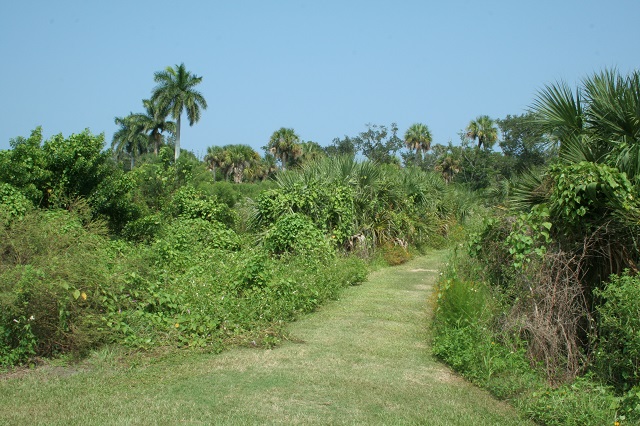
Captain Forster Hammock Preserve
This lush preserve, with extensive hardwoods, plus coastal strand and wetlands, boasts one of the largest remaining maritime hammocks on Orchid Island. Songbird migration in spring and fall makes this site especially rewarding; Veery, Ovenbird, Tennessee Warbler, Magnolia Warbler and Scarlet Tanager are recorded annually. Rare warblers such as Connecticut and Wilson’s have been spotted at the preserve. In winter, look for Black-and-white Warbler, Painted Bunting, and Blue-headed Vireo. In the summer months you may encounter a Magnificent Frigatebird gliding above the Indian River. Follow the primitive foot trails, starting with the Forster’s Hammock Trail, which heads east towards two small, seasonal ponds. A number of short trail loops branch off to the north and south of the main Hammock Trail (Warbler’s Walk is particularly good). Trails may be wet and mucky at times so wear appropriate shoes. Seasonal tours are offered and self-guided walks are a great way to see a remnant of “old Florida.” Restrooms and parking are located one mile south of County Road 510 on Jungle Trail.
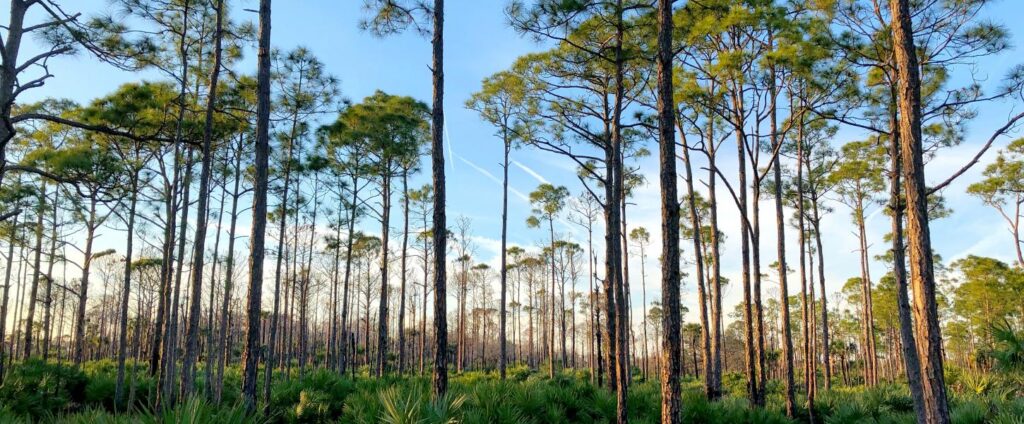
ST. SEBASTIAN RIVER PRESERVE STATE PARK
The preserve is part of the Great Florida Birding and Wildlife Trail and has been identified as one of the top birding locations in the United States. Many different species of birds use the preserve during migration, such as the swallow-tailed kite, various songbirds, hawks, hummingbirds and robins.
Please look at our bird checklist to see which birds are here during each season. Our most popular birds are red-cockaded woodpeckers, Florida-scrub jays and Bachman’s sparrows. More common sightings include sandhill cranes, wood storks, Southern bald eagles and American kestrels.
- Top 9 Late Night Foodie Spots in Indian River County - May 28, 2025
- RawSpace - May 28, 2025
- Top Leak Detection Companies in Vero Beach, FL - May 24, 2025

